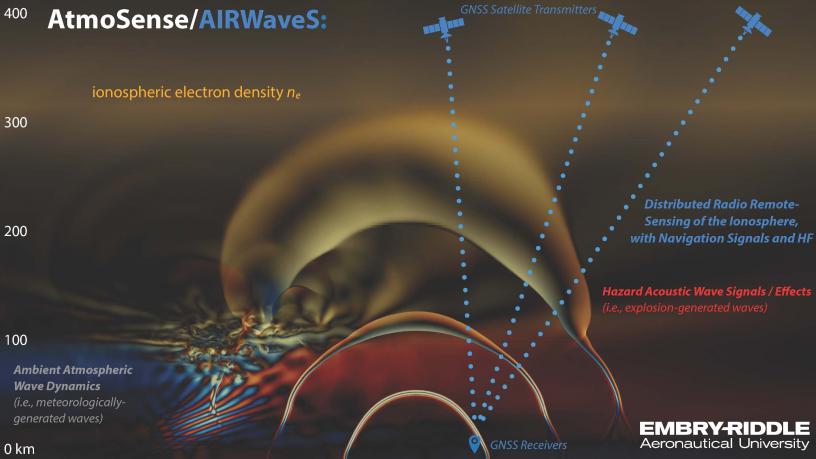Summary

The Atmosphere as a Sensor (AtmoSense) program is a fundamental science program that seeks to understand the propagation of mechanical and electromagnetic energy from the surface of the Earth through the Earth's ionosphere due to transient events such as meteorological sources, geophysical sources, prompt hazards, etc. For example, an event on the surface of the Earth, such as a volcanic eruption, will produce radially outward longitudinal mechanical perturbations on the atmosphere.
Those wave components travelling radially away from the center of the Earth will encounter decreasing air density with altitude thus reducing the amount of energy transferred to the atmosphere. This energy can propagate all the way to the bottomside of the ionosphere and has been detailed in the observational literature using various electromagnetic measuring techniques. AtmoSense seeks to understand the evolution of this energy through the troposphere, stratosphere, and mesosphere (before it reaches the ionosphere).
Understanding the basic fundamentals of atmospheric energy propagation from transient events could inform new detection techniques and hazard forecasting for activities on the Earth's surface.
Office
Defense Sciences OfficeThis program is now complete.
This content is available for reference purposes. This page is no longer maintained.
